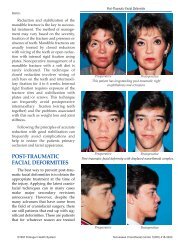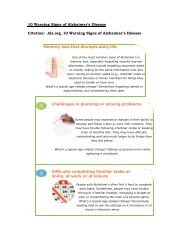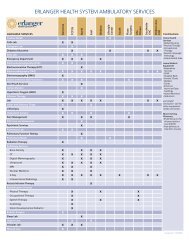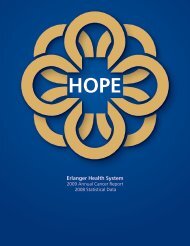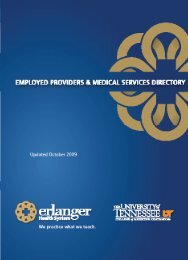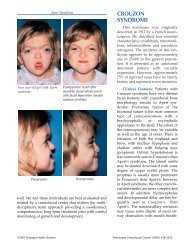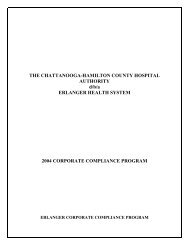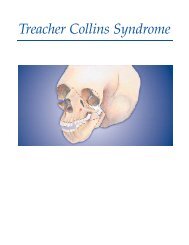2011 Cancer Committee Members - Erlanger Health System
2011 Cancer Committee Members - Erlanger Health System
2011 Cancer Committee Members - Erlanger Health System
You also want an ePaper? Increase the reach of your titles
YUMPU automatically turns print PDFs into web optimized ePapers that Google loves.
Uterine Corpus (Endometrium)<br />
According to the American <strong>Cancer</strong> Society, an estimated 46,470 cases of the uterine corpus (body of the<br />
uterus) are expected to be diagnosed in <strong>2011</strong>. These usually occur in the endometrium (lining of the uterus).<br />
Since 1992, incidence rates of endometrial cancer have been stable in white women, but increasing in African<br />
American women by 1.7% per year.<br />
An estimated 8,120 deaths are expected in <strong>2011</strong>. Similar to incidence, death rates for cancer<br />
of the uterine corpus have been stable in white women, but increasing in African-American<br />
women by 0.8% per year since 1998.<br />
Signs and symptoms<br />
Abnormal uterine bleeding or spotting (especially in postmenopausal women) is a frequent early sign. Pain<br />
during urination, intercourse, or in the pelvic area is also a symptom.<br />
25<br />
Uterine Corpus<br />
Risk factors<br />
Obesity and greater abdominal fatness increase the risk of endometrial cancer, most likely by increasing<br />
the amount of estrogen in the body. Increased estrogen exposure is a strong risk factor for endometrial<br />
cancer. Other factors that increase estrogen exposure include menopausal estrogen therapy (without use of<br />
progestin), late menopause, never having children, and a history of polycystic ovary syndrome. (Estrogen<br />
plus progestin menopausal hormone therapy does not appear to increase risk.) Tamoxifen use increases risk<br />
slightly because it has estrogen-like effects on the uterus. Medical conditions that increase risk include Lynch<br />
syndrome, also known as hereditary nonpolyposis colon cancer (HNPCC), and diabetes. Pregnancy, use of<br />
oral contraceptives, and physical activity provide protection against endometrial cancer.<br />
Early detection<br />
There is no standard or routine screening test for endometrial cancer. Most endometrial cancer (69%) is<br />
diagnosed at an early stage because of postmenopausal bleeding. Women are encouraged to report any unexpected<br />
bleeding or spotting to their physicians. The American <strong>Cancer</strong> Society recommends that women<br />
with Lynch syndrome, or who are otherwise at high risk for endometrial cancer, should be offered annual<br />
screening with endometrial biopsy and/or transvaginal ultrasound beginning at 35 years of age.<br />
Treatment<br />
Uterine corpus cancers are usually treated with surgery, radiation, hormones, and/or chemotherapy, depending<br />
on the stage of disease.<br />
*Above information taken from the American <strong>Cancer</strong> Society <strong>Cancer</strong> Facts and Figures <strong>2011</strong>



